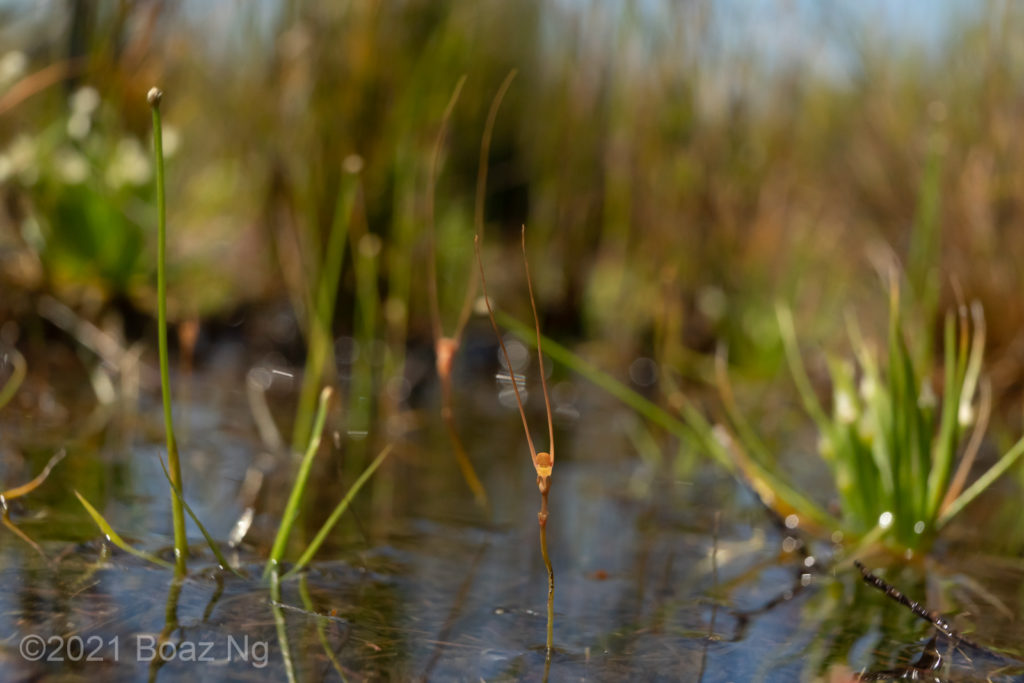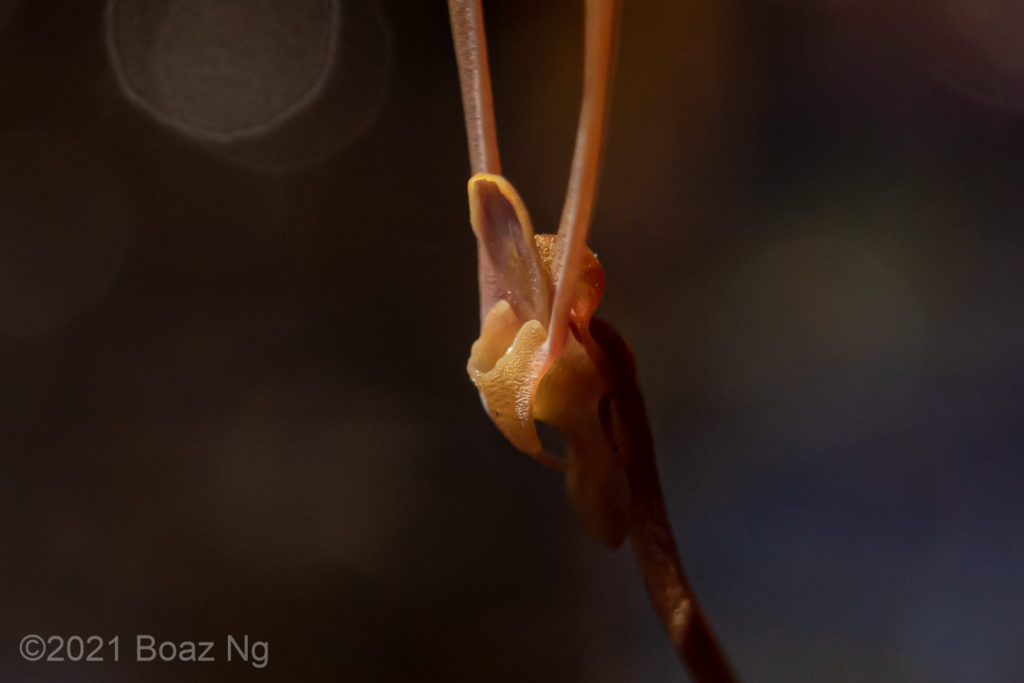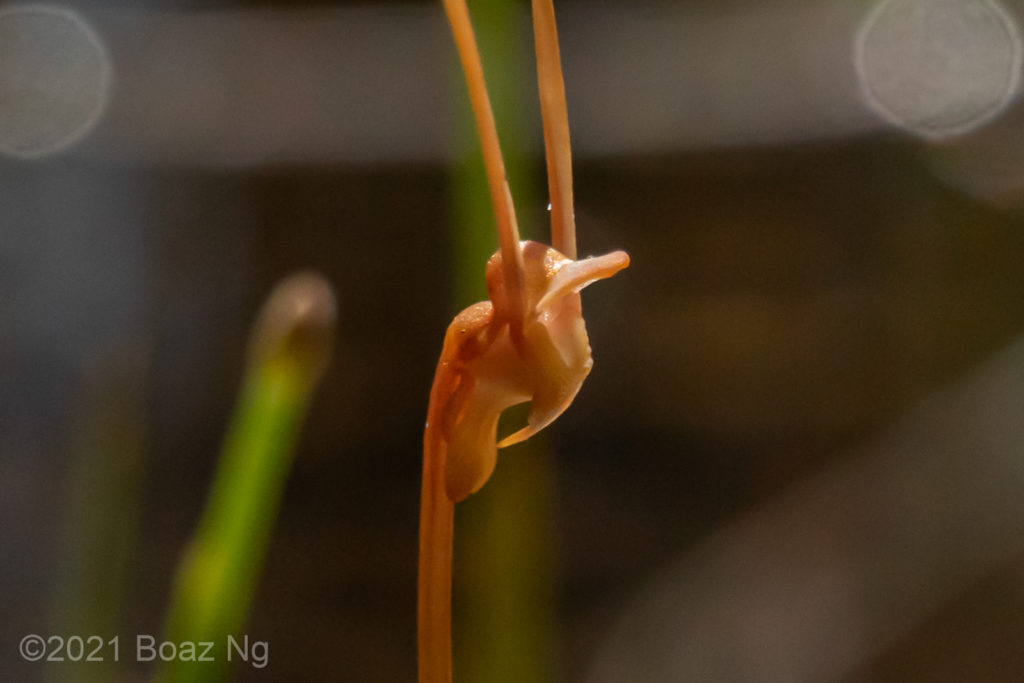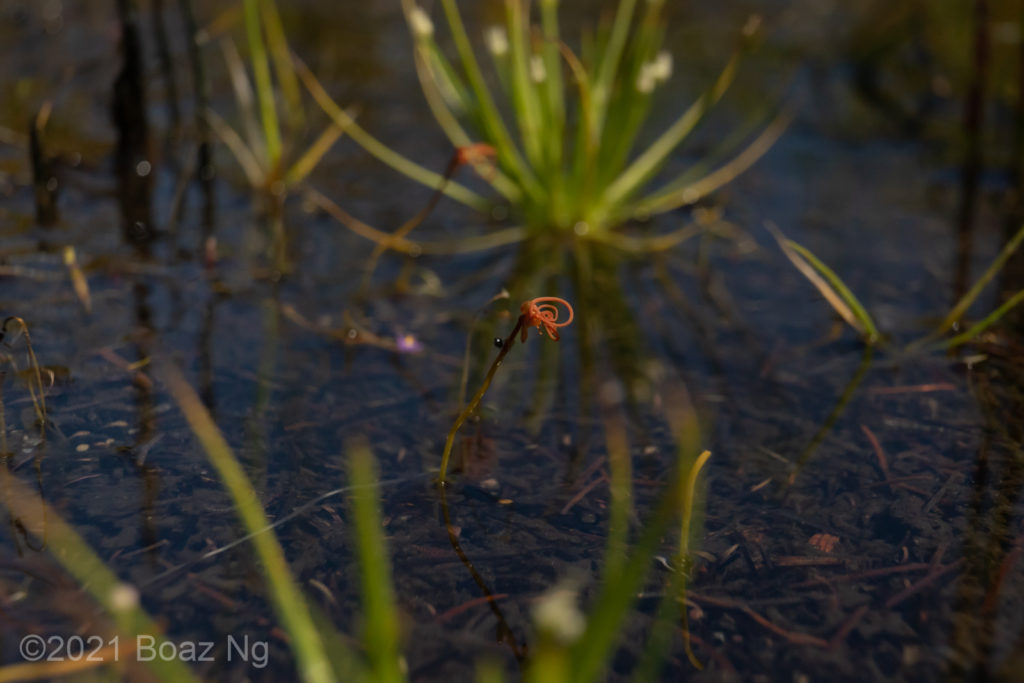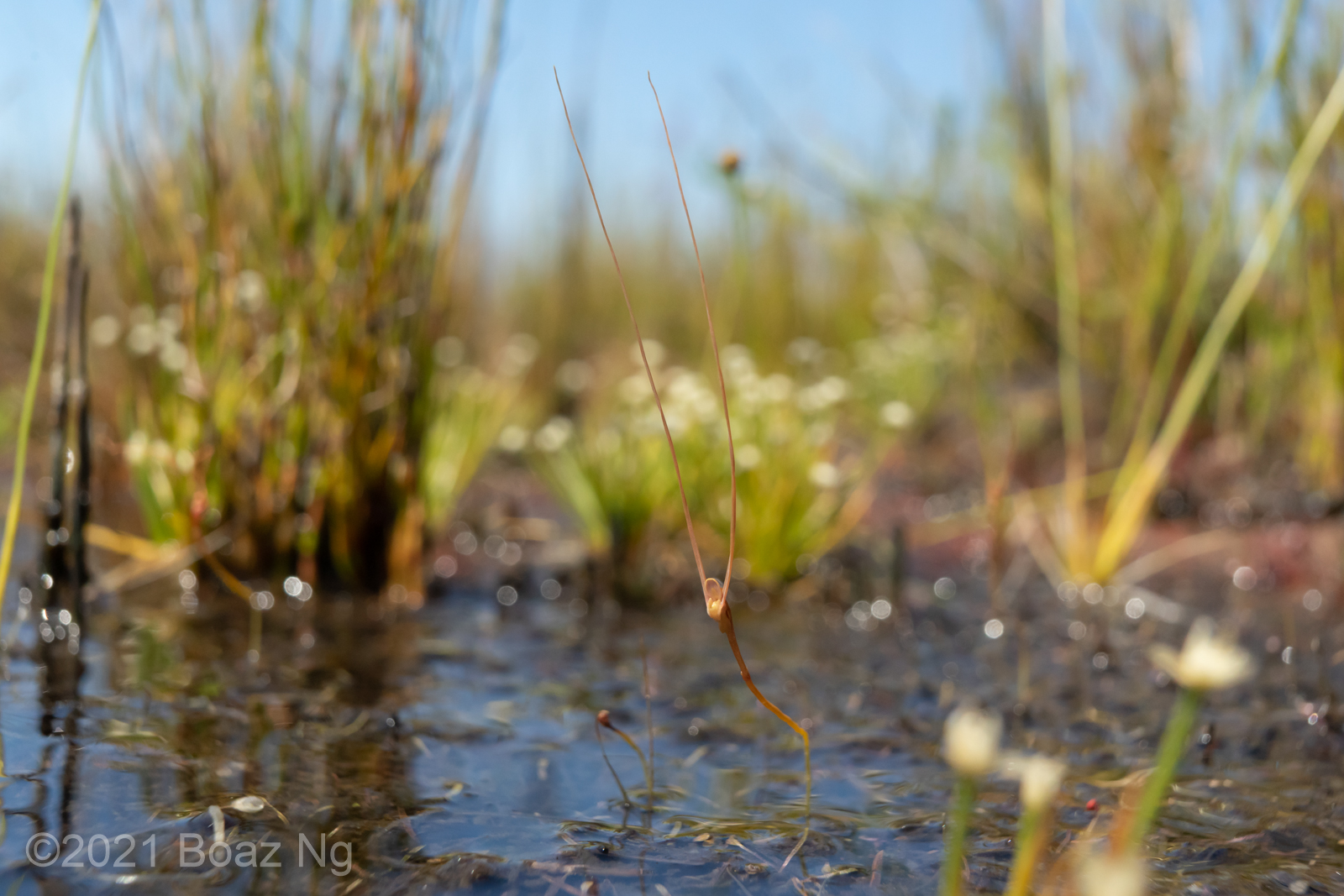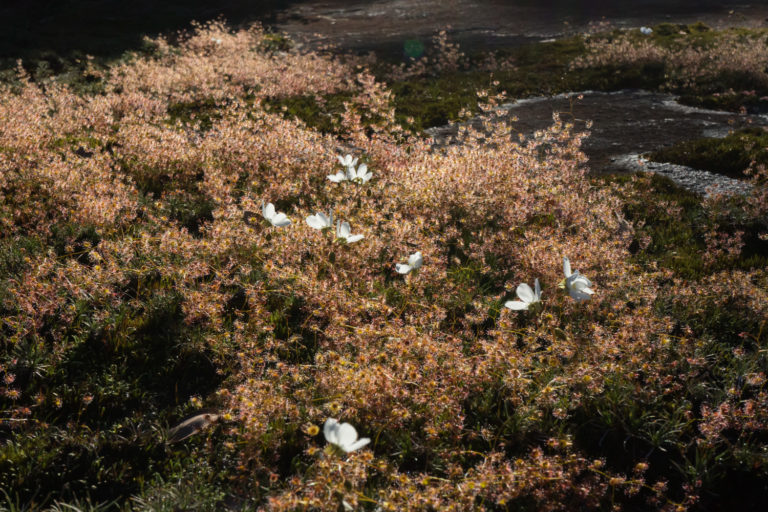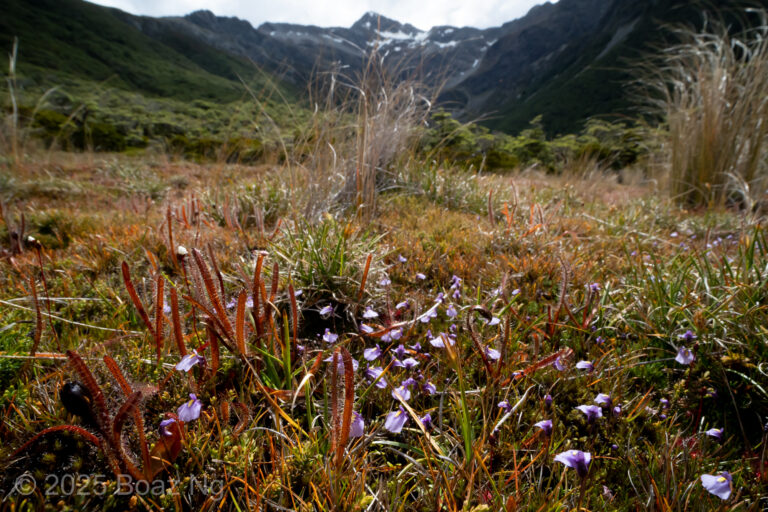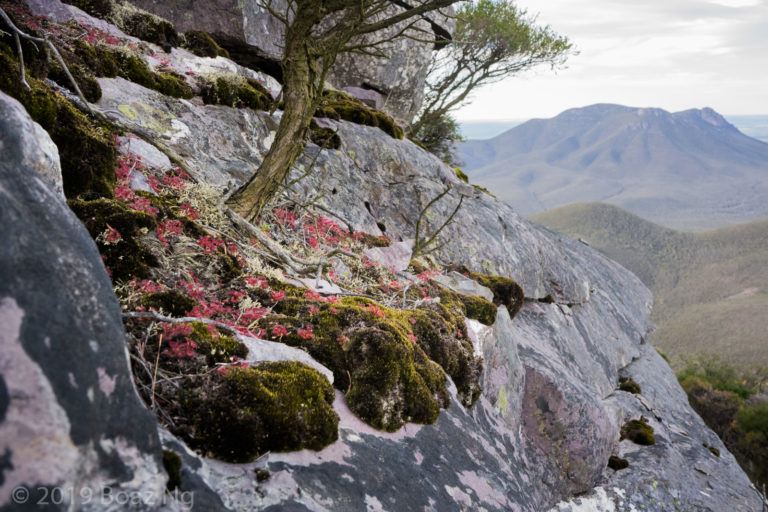Utricularia dunstaniae is a terrestrial bladderwort endemic to the the Top End of the Northern Territory and Kimberleys of Western Australia. The species is notable for the pair of very long antennae that extend upwards from the sides of the flower. These antennae do not cross over each other. The lower corolla lip also has a single downwards pointing lobe that terminates in a point. The spur of the flower forms a pouch like appendage. The upper corolla lip forms a simple hood.
The species is amongst the hardest bladderworts to locate in the Northern Territory despite growing in a generic habitat in the Howard River Sand Plains. This is presumably due to a very specific niche or narrow flowering period (or both). I observed the plants at the end of the wet season, after most of the water has drained from the flood plain. The plants grew in a flat area in a very shallow depression with an accumulation of dark organic matter. Water was percolating from the surrounding sand into the depression, forming a shallow layer of water just 1 cm deep. It was in this puddle that a small population of around 10 active blooms were present. The species is also known from the edge of ephemeral water sheets atop sandstone in the Kimberleys and the Arnhem Plateau.
U. dunstaniae is closely related to a few other Utricularia that have similar antennae. It can be distinguished by counting the number of pointed appendages below the antennae on the lower corolla lip (1 in U. dunstaniae, 5 in U. capilliflora, 3 in U. dunlopii and 3 in U. antennifera). In the Howard Sandplains, it grows sympatrically with U. capilliflora and U. dunlopii and can be easily distinguished at a glance by observing the pair of antennae which are well spaced apart and roughly parallel to each other (the antennae cross or form a ‘V’ in the other two species).
